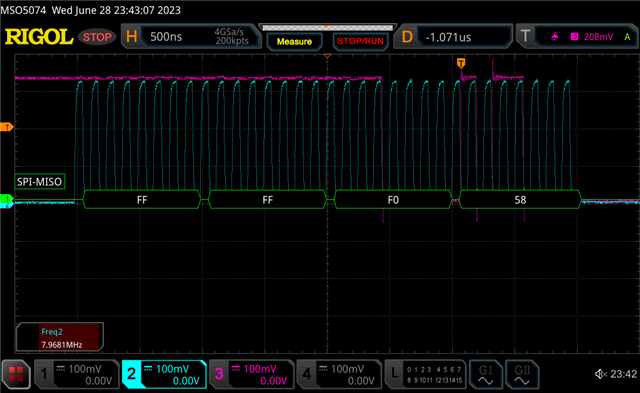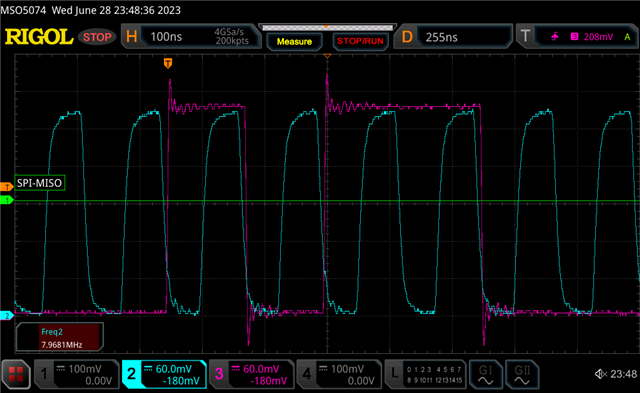Environment: NCS v2.0.2
Chip: NRF52840_xxAA_REV2
Board: Custom pre-production board
Hi,
I know that there are several existing tickets that revolve around SPIM3, but I have tried all suggestions int the 20-some-odd tickets that I've researched so far with no change in results.
What I'm trying to accomplish
We have been using the SPIM2 peripheral with no problems whatsoever. However, as we move towards production we would like to squeeze more speed out of the bus if possible. In the case of our chip, that would mean moving to the SPIM3 peripheral that offers up to 32Mhz operation. We have two devices on the SPI lines: a WiFi module (25MHz max) and an SD card. All physical SPI pins are high-speed capable. Due to the WiFi chip's speed limitation we only really need to go to 16 Mhz. So far, SPIM3 is not being reliable at any speed.
Symptoms
The bus seems to work fine for a small amount of time. I can write maybe 500kbit to the SD card or can start to configure the wifi module, but after a small amount of traffic the bus seems to have a hiccup and stops working, In the case of the SD card I get a file write error, and with the wifi module it just stops sending the correct next command to continue configuration.
Troubleshooting
I have scoped the lines at 8, 16, and 32Mhz and they have essentially identical form. It does not seem to be raw signal related. I know the devices can work at 8Mhz because they work fine when using SPIM2. I tried using SPIM3 at 8Mhz and even down to 4Mhz and get the exact same behavior. So again, that leads me to believe that the issue is not speed or signal related, but that is just an assumption on my part.
I also printed all of the spi traffic from the wifi module to see where things start to differ. It always differs at the exact same spot in configuration. It makes an 2 byte transmit and expects a 2 byte response of 0x00 0x58. I get the correct response when using SPIM2, but on SPIM3 it always responds with 0x00 0xb0. It may be a coincidence, but 0x58 left-bit-shifted by 1 is equal to 0xb0 so it may be that the RX value is being shifted to the left by one. (0x58 = 01011000; 0xb0 = 1011000).
I've read the various errata related to SPIM3 such as anomaly 198 and am working through ensuring that all relevant anomalies are being addressed.
Thank you for any advice or help,
Louis





